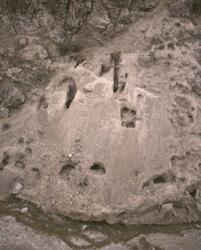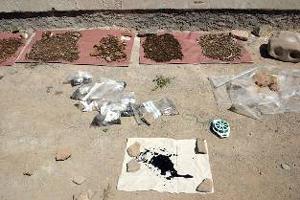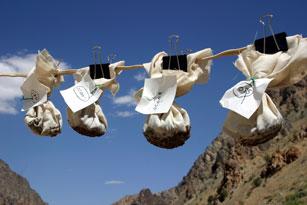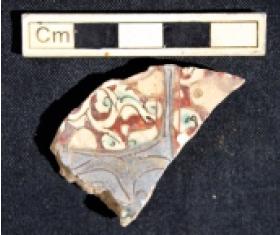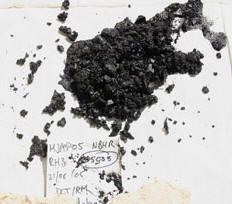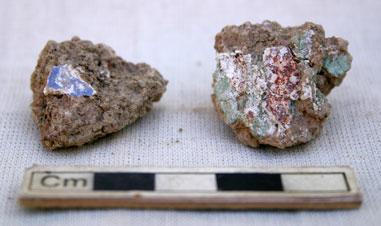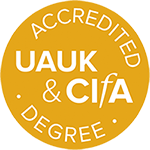
Minaret of Jam Archaeological Project
Dr David Thomas / Dr Alison Gascoigne
Introduction
The Minaret of Jam soars into the sky in a steep-sided valley in central Afghanistan - at 63 m high, it is hard to believe that such a magnificently decorated structure could have been ‘forgotten’ about by the outside world after the Mongol campaigns ca. 1221-2. Then again, having endured the tortuous 4WD journey required to reach Jam even today, perhaps it is not so surprising that the Minaret remained virtually unknown until Sir Thomas Holdich, of the Russo-Anglo Afghan Boundary Commission, ‘re-discovered’ it in 1886. Only handful of scholars and intrepid tourists ventured to the site before the Soviet invasion in 1979; the subsequent decades of turmoil had until recently effectively placed Jam out of bounds for outsiders. But Jam is ‘back on the map’, as independent travellers and organised tours take advantage of the ameliorating political and security situation to include it on their itineraries.
The principal study of the Minaret was carried out by French scholars in the late 1950s. With the exception of Herberg’s brief surveys in the 1970s, however, little fieldwork has been conducted on the surrounding archaeological site. This lamentable situation started to change in 2003, with the inception of the Minaret of Jam Archaeological Project. We have recently completed a second season of fieldwork at Jam and are planning to return in August 2006.
Jam is located at the confluence of the Hari Rud and Jam Rud, about 215 km to the east of Herat, in Ghur province of central Afghanistan. The site is 1900 m above sea-level, with nearby mountain peaks reaching to 3500 m. The harsh winters are often followed by devastating floods as the snows melt; the summers are hot and dry. With little flat land available along the scree-covered valleys, local people struggle to survive in a subsistence economy.
The inhospitable climate and terrain make it all the more remarkable that Jam was once the centre of a huge empire. Scholars generally agree that Jam is ancient Firuzkuh, the summer capital of the Ghurids. At the peak of their florescence, the Ghurid dynasty (ca. 1150-1216) controlled a swathe of territory from Nishapur in eastern Iran to the Bay of Bengal in India. They had the good fortune to rise to prominence as the Ghaznavid dynasty crumbled, and the misfortune to be squeezed between the Khorezmshah and the nascent Mongols, whose, commanded by Ögedei, son of Chingiz Khan, besieged Jam twice, finally capturing the city in ca. 1222.
© DCT 2007: This website was last updated on 02/06/07. Any problems, e-mail me: D.C. Thomas.
The Ghurids
At the peak of their florescence, the Ghurid dynasty controlled a swathe of territory from Nishapur in eastern Iran to the Bay of Bengal in India. They had the good fortune to rise to prominence as the Ghaznavid dynasty crumbled, and the misfortune to be squeezed between the Khorezm-shah and the nascent Mongols.
Ghurid history has been extensively researched by C.E. Bosworth, and more recently by our colleague Barry Flood in NYU; Barry is particularly interested in Ghurid and Islamic expansion into India. What follows is a summary of their work.
Mahmud of Ghazna is credited with introducing Islam to Ghur ca. 1009. The Ghaznavid empire peaked ca. 1030, but Sultan Mascud was disastrously defeated by the Seljuks in 1040. The Seljuks raided Ghur in 1107/8, after which the Ghurids sent annual tribute of armour and watchdogs to Sultan Sanjar in Merv, whilst simultaneously seeking to manipulate the weakness of their Ghaznavid neighbours.
In 1145/6, the fortress of Firuzkuh was founded, and in 1150/1, the Ghurid ruler Ala' al-Din Husayn attacked and torched Ghazna, earning the nickname "the World Incendiary".
The devastation he wrought, and desecration of Ghaznavid sultans' tombs, reflected the fact that Ala' al-Din was avenging his brother whom the Ghaznavids had captured and crucified in 1149, sending his head to Sultan Sanjar in Rayy (near modern Teheran). As many as 60,000 inhabitants of Ghazna were massacred; legend has it that the prisoners were forced to carry building materials from Ghazna to Firuzkuh, where the mud was mixed with their blood to build Ghurid towers. Ball has suggested that the numerous Ghurid towers that dot the landscape formed part of a 'Maginot' line of defences.
The Minaret is dedicated to Sultan Ghiyath al-Din, who acceded to the Ghurid throne in 1163 and ruled jointly with his brother Mucizz al-Din. Scholars generally agree that the archaeological site of Jam is ancient Firuzkuh, but still debate precisely when the Minaret was built (ca. 1173/4 seems most likely).
The ruling brothers greatly expanding the Ghurid empire, despite suffering a number of significant reverses, particularly in 1191 at Tara'in in India, when Mucizz al-Din was utterly defeated and seriously wounded. He returned the next year, however, with 120,000 cavalry and captured Delhi in 1193. In 1199, the Ghurids exceeded the height of the Minaret of Jam, building the 72.5 m high Qutb Minar in Delhi.
Ghiyath al-Din died in 1202, after taking Nishapur and Merv; the Ghurids were then driven out of Khorezm and Mucizz ad-Din was assassinated by an Ismacili in India in 1206. This event, and the subsequent collapse of the Ghurid empire, highlights the tensions within Islam during this period. According to Flood, Ghiyath al-Din's titles emphasized his role as the promoter of orthodoxy and scourge of heretics. The Ghurid elite were closely associated with the anti-Ismacili Karramiya sect, but they seem to have changed their allegiances in 1199 to the more mainstream Shafici sect.

Bosworth sees this dramatic shift in official Ghurid piety as a reflection of the fact that they were now players on the 'world stage' and were seeking to distance themselves from their backwoods origins. Needless to say, the move was not popular in Ghur, and resulted in rioting in Firuzkuh, as well as in other cities such as Herat and Nishapur.
By the early 1200s the Ghurids were a spent force – one ruler was assassinated ca. 1210 and his successor taken prisoner to Khorezm. Ghazna fell in 1215/6 and Mongol armies under Chingiz Khan's son Ögödei besieged and took Firuzkuh in ca. 1221/2. Despite their ignominious end, the Ghurids and Minaret of Jam remain a potent political symbol, as this election poster from 2005 demonstrates.
© DCT 2007: This website was last updated on 02/06/07. Any problems, e-mail me: D.C. Thomas.
The 2003 Season
- View of the 2003 trenched from the Minaret
MJAP conducted a short preliminary season of work at Jam in August 2003, under the auspices of the Istituto Italiano per l'Africa e l'Oriente and with the collaboration of the National Afghan Institute of Archaeology. We were sponsored by UNESCO to undertake an archaeological impact assessment of the proposed route of a much-needed road and bridge.
We located and excavated a total of 10 robber holes on the West Bank of the Jam Rud, near the Minaret. The robbers had destroyed much of the archaeology in this area, even burrowing through mud-brick walls into bedrock in the hope of reaching a room. What remained consisted of large stone walls running perpendicular to the slope, with smaller walls running off, parallel to the slope. This suggests a terraced settlement. We found traces of well-plastered floors, and multi-coloured wall plaster, indicating that the inhabitants had an appreciation of, and invested in, the aesthetic appearance of their dwellings.

- Robber Hole 3, before excavation
Unsurprisingly, we found few intact artefacts - mostly broken pot sherds, animals bones, pieces of stucco and occasional corroded metal objects. The variety and quality of these fragmentary finds, however, hinted at the objects that the robbers had looted. They are a salutary reminder to collectors that for every illegally excavated object they buy, many others are destroyed in the process.
The robber holes revealed few architectural remains towards the base of the slope, so we concluded that the construction of a road in this part of the site would have the least detrimental affect on the World Heritage Site. It is important that archaeologists are aware of the needs of the present day population, as well as the remains of their predecessors.

- Baked-brick paving belonging to a large courtyard building (a mosque?) near the Minaret
Our most significant discovery in 2003 came 90 m to the east of the Minaret. Acting on local information, we excavated another robber hole here and uncovered an intricate herring-bone paved surface, made out of baked-bricks. This courtyard paving has parallels in the earlier Ghaznavid palaces at Lashkari Bazaar and Ghazna. Another area of plain paving was exposed in the eroding river bank nearby, and a 10 m long stretch of baked-brick wall.
These architectural remains concur with brief reports in Maricq and Wiet's 1959 publication of the remains of a large building beside the minaret. We think that it could be the Friday Mosque of Firuzkuh, which the Ghurid chronicler Juzjani states was washed away in a flash-flood shortly before 1200. It is regrettable that no archaeologists seem to have been present during the digging of the 4 m wide cess-pit for rest-house, just to the south of this area.
© DCT 2007: This website was last updated on 02/06/07. Any problems, e-mail me: D.C. Thomas.
The 2005 Season
The Looting of Jam
In 2005, we continued to investigate the illicit excavation of antiquities at Jam. We did this by combining the use of high resolution satellite images (acquired thanks to a grant from the British Embassy in Kabul), Global Positioning Systems and field survey to locate and record the robber holes.

- Robber holes on the North Bank of the Hari Rud
The daunting scale of the task was evident by the end of the first day, so we decided to concentrate on a 50 m strip opposite the Minaret, stretching 225 m from Qasr Zarafshan down to the Hari Rud. From this intensive sample, we could extrapolate estimates for the number of robber holes in the rest of the valley side.
By the end of the season, we had recorded 121 robber holes in this strip, amounting to the destruction of ca. 1,300 m3 of archaeological deposits. Nearly 70% of the robber holes contained definite or possible architecture. The area covered by the robber holes amounts to 11% of the strip – by way of comparison, an archaeological excavation generally excavates only 2-3% of a site over the course of many seasons.
Since this part of the North Bank of the Hari Rud is 150 m long, we estimate that there are over 360 robber holes across this one valley slope – this is the scale of the damage that the looting of antiquities has wrought at Jam. On a more positive note, our fieldwork in 2005 also yielded important new discoveries about the archaeological sites in the area: namely, the possible mosque near the Minaret, Ghurid domestic architecture and a kiln.Courtyard baked-brick paving and tumbled columns, South Bank Hari Rud.
The 'Mosque' near the Minaret
We have now excavated five small trenches in robber holes and along the Hari Rud riverbank, 60-90 m from the Minaret. All these trenches have revealed areas of well-preserved, baked-brick courtyard paving, probably belonging to a large public building. We have also found three parts of baked-brick columns, which seem to have toppled onto flat brick paving from the south.
Our geomorphologist, Dr Kevin White (University of Reading), is currently analyzing thin sections of 10-15 cm thick alluvial deposits found above the courtyard paving. Although this study is on-going, we have concluded that the sediments immediately above the paved surface are flood deposits, largely deposited in one major event. One possible interpretation of the upper coarser grits is that the flood waters became more energetic during the event, perhaps as a wall gave way, allowing greater ingress of flood waters. The flood does not seem to have affected the higher parts of the building to the west / south, where less overburden and little alluvium cover the pavement – this may explain why the minaret survived.
Other Survey Work
 Our other survey work in 2005 combine visits to, and more detailed recording of, sites known from Herberg and Davary's surveys, and the discovery of new sites, such as a fort which might have protected the eastern approach to the city.
Our other survey work in 2005 combine visits to, and more detailed recording of, sites known from Herberg and Davary's surveys, and the discovery of new sites, such as a fort which might have protected the eastern approach to the city.
We climbed up to Koh-e Khara, the site of a large cistern, 400 m above Jam. The local name for the site is Khan-e Dakhtaran Padshah - House of the King's Daughter. Even this inaccessible site has been robbed, but we found a lot of evidence that it was an important residence – turquoise-glazed bricks, glass rims and two sherds of rare Minai ware pottery from Iran. The cistern measures 8.2 x 4.95 m, with 1 m thick walls. It is over 4.5 m deep and had a capacity of at least 85,000 litres. We think that the cistern might have been built to collect snow and ice, rather than rain, to provide cold drinks for the people of Firuzkuh in the summer.
 A local guide took us to a well-preserved kiln in the Jam Rud valley. The kiln is large, measuring over 4 m long, 1.7 m wide and over 1.7 m high. The kiln consists of at least 6 arches, ca. 52 cm wide, with 12 cm wide flues separating them. A small hole for stoking the fire was noted at the northern end of the kiln.
A local guide took us to a well-preserved kiln in the Jam Rud valley. The kiln is large, measuring over 4 m long, 1.7 m wide and over 1.7 m high. The kiln consists of at least 6 arches, ca. 52 cm wide, with 12 cm wide flues separating them. A small hole for stoking the fire was noted at the northern end of the kiln.
At the nearby site of Khar Khoj, we found numerous pieces of slag and wasters, suggesting that this part of the site may have been an industrial area.
 We did not have time to survey the nearby 12th-13th century Hebrew cemetery properly, but it seems to have been looted too. We think that the four tombstones with inscriptions which we recorded are new discoveries, not included amongst those published by Gnoli and Rapp. We would like to survey the cemetery properly in the future, the western and northern extents of the site, the fortifications to the west of Qasr Zarafshan, and a large ruined building at Koshkak – the size of the building suggests that it was very important.
We did not have time to survey the nearby 12th-13th century Hebrew cemetery properly, but it seems to have been looted too. We think that the four tombstones with inscriptions which we recorded are new discoveries, not included amongst those published by Gnoli and Rapp. We would like to survey the cemetery properly in the future, the western and northern extents of the site, the fortifications to the west of Qasr Zarafshan, and a large ruined building at Koshkak – the size of the building suggests that it was very important.
© DCT 2007: This website was last updated on 02/06/07. Any problems, e-mail me: D.C. Thomas.
Archaeological work in Kabul, July 2007
UNESCO have decreed that no further archaeological work can take place at Jam until the on-going structural work on the Minaret is completed (work that may take several years). Consequently, we applied for and received approval to undertake a survey of the medieval landscape in Ghur province, as part of a capacity building programme for Afghan archaeologists and a series of seminars to be held in Kabul University. Unfortunately, when we got to Kabul in July, we were unable to undertake the planned field season; we spent the time in Kabul productively, however, working on several other projects:

- Attendees of the seminars - FJK
Archaeological Survey Seminars, Kabul University
We held four days of seminars, covering the following topics:
- Pre-season research techniques, site identification and documentation, survey equipment, data collation and analysis
- Photography
- Occupational Health and Safety, and First Aid
- Ceramics
- Illustration
- Conservation
- Art history
The seminars were attended by up to 35 students, members of staff and representatives of the National Afghan Institute of Archaeology. We hope to publish the seminars as a bi-lingual booklet. Click on the .doc or .pdf links to open a Dari summary of the seminars.
Bala Hissar - archaeological impact assessment

- Construction trenches in Balar Hissar - ALG
Bala Hissar, the 'High Fort', is the archaeological heart of Kabul. The site has been occupied since at least the Kushan period, although it is better known as the residence of Babur (1483-1530 CE, founder of the Mughal Empire) and the scene of Anglo-Afghan conflicts in the late 1800s. Military contractors recently dug a series of trenches on the lower part of the archaeological site. Concern about the damage being done to the site helped the Ministry of Information and Culture (MoIC) and the Society for the Preservation of Afghanistan's Cultural Heritage (SPACH) to lobby successfully for an immediate halt to the construction work.
We made two visits to the site, at the Ministry's invitation, to assess the damage caused by the contractors and to gather what archaeological information we could from the trenches. We were the first team of archaeologists to be permitted onto the site since the work was halted.
The areas bulldozed by the contractors are much more extensive than we anticipated. The amount of archaeological remains visible in the sections is variable, and in most cases relatively modern. That said, the location of Trench 1 over the putative Mughal mosque and the discovery of medieval and pre-Islamic sherds in Trenches 2 and 8 is of considerable concern. The architectural remains in Trenches 3-5 are part of Afghanistan's recent cultural heritage – despite being relatively modern, they should be investigated properly rather than destroyed without consideration.

- Kandahar sherds store - Travis Beard
Kabul National Museum
We were able to undertake a wide variety of work at Kabul National Museum, thanks to Mr Masoudi, General Director of Museums, and his staff, who were most welcoming and helpful during our stay. We are delighted to see the progress that has been made at the Museum in recent years, and we look forward to undertaking further collaborative projects in the future.

- Pieter, tracing gravestone designs - DCT
Our work included:
- Creating an inventory of the bags of ceramics from the excavations at Kandahar from 1975-78, which turned up in 2004. We listed over 2400 bags of ceramics / contexts. Please contact us if you would like a copy of the resultant Excel spreadsheet.
- Documentation of nine Islamic gravestones in the Museum gardens. The gravestones are thought to be Timurid in date, although a couple of the more worn ones may be earlier. We plan to publish the drawings and analysis of the inscriptions in the coming months.
- Conservation work on gravestones, wooden panels and stucco Buddha heads. We also advised the Museum's conservation staff about materials and new techniques.
- Provision of basic medical care to Museum staff and training in First Aid
- Research into Afghan figurines by Dr Fiona Kidd
 Murad Khane
Murad Khane
Pieter Collet, our highly capable illustrator, spent several days working on the Murad Khane Regeneration Programme, at the invitation of Rory Stewart and Andre Ullal of the Turquoise Mountain Foundation (TMF). Murad Khane was a vibrant commercial and trading centre in the middle of late eighteenth-century Kabul, but it has since fallen into disrepair and many of its buildings are on the verge of collapse. Pieter's architectural drawings, such as the one opposite, will form part of the TMF's documentation of this long-neglected part of Kabul's historic city.
Public Education
Archaeological projects have an obligation to make the results of their work accessible to people in the host nation, as well as to academic audiences around the world. This is particularly important in countries such as Afghanistan, which are re-building their academic infrastructure and knowledge base. We have now published two bi-lingual educational booklets, for Afghan students (.rtf and .pdf) and adults (.doc and .pdf) (click on either to download the Dari text).
This season, we also gave a public lecture at the British Embassy and recorded a bi-lingual lecture Afghan Radio Television, as part of the Toward Open University series.
Despite this season's difficulties, we successfully completed several of our project aims, and undertook other important work. We are particularly grateful to Mr Masoudi, General Director of Museums, Mr Rasoli and Mr Zakir of the National Afghan Institute of Archaeology, David Jurie of the Délégation archéologique française en Afghanistan (DAFA), Rory Stewart of the Turquoise Mountain Foundation, Jolyon Leslie of the Aga Khan Trust for Culture, Ana Rodriguez of SPACH, Travis Beard of Argus Photography and Haidar Jailani of Kabul Lodge for their assistance and hospitality during our stay in Kabul. As ever, our work would have been a lot more difficult without the wise counsel and assistance of Haji Naqshband Rajabi.
© DCT 2007: This website was last updated on 02/06/07. Any problems, e-mail me: D.C. Thomas.
Scientific Analyses
Virtually no scientific studies of archaeological samples from Afghanistan have been possible for over 25 years - we are very grateful to the Afghan authorities for permitted us to export a wide variety of samples for analysis. Indeed, some of the scientific work outlined below, such as Marco Madella's analysis of the phytolith remains, is pioneering, in the context of Afghan archaeology.
We hope that these studies will start to shed light on the day-to-day lives of the Ghurids – their diet, agricultural practices, animal husbandry, craft manufacturing techniques, technological skills and trading practices.
Archaeo-botanical remains: Mette Marie Hald - University of Sheffield
The results of the archaeo-botanical analysis are encouraging. The botanical samples include cereal grains (barley and wheat) and chaff, pulses (chickpea and lentils) and a variety of fruits and nuts (grapes, figs, apple/pear, pistachio?), as well as wild plants. The weeds in the samples are particularly interesting because they tell will us about crop processing techniques, and potentially whether the crops were irrigated.
Archaeo-zoological remains: Matilda Holmes - freelance consultant
Sheep and goats were predominant amongst the faunal remains, accounting for 96% of the bones identified. The mortality patterns, with a steady kill-off of the herd, indicate a consumer assemblage where animals marketed were those excess to requirements on nearby producer sites. The relative lack of head, feet and shin bones suggests that meat was bought in to Jam as part of a dressed carcass, or as joints of meat. This evidence, and the abundance of meat bearing bones, are indicative of table refuse.
Ceramics: Dr Gascoigne - University of Cambridge
- Minai ware from Iran
In the absence of recent archaeological work in Afghanistan, our study of the ceramics started more or less from scratch, with the creation of hand- and wheel-made fabric series, and the recording of a catalogue of forms. A high proportion of the pottery from the site is highly decorated, including:
- imported high-statues wares such as Minai and lustreware
- local glazed wares with incised and splashed decoration 'Bamiyan sgraffito'
- local turquoise-glazed stonewares with moulded decoration
- elaborately moulded water jugs
- handmade cooking pots and bowls with black and red painted geometrical designs
- large storage jars with stamped decoration on the shoulders.

- A Ghurid face?
The ceramics from Jam are significant because they contain aspects of both western and eastern ceramic traditions. The lustreware and Minai probably came from manufacturing centres in Iran such as Kashan, while the geometrically-painted handmade wares, probably reflect a Central Asian tradition. A few pieces of Chinese porcelain, including celadon were also identified.
We are also undertaking petrographic study of ceramic thin sections. By identifying the geological components of the clay, we hope to identify whether pots were made locally or imported.
Charcoal: Dr Katleen Deckers - Universität Tübingen
The charcoal samples are dominated by Populus (poplar) / Salix (willow), while Tamarix (tamarisk) is also often present and in relatively high numbers; Acer (maple) is present in some samples - they probably represent the local riverine vegetation. Vegetation away from the stream, however, consisting mostly of Chenopodiaceae species, Amygdalus (almond) species, Rosaceae species, Rhamnus and Pistacia are also present. The Chenopodiaceae, which thrive in dry and open habitats, point to a nearby steppe region with some low shrubs of the said taxa.

Glazed tiles: Prof. Fabbri - FAENZA
Two turquoise glazed tile samples were analyzed - one from Robber Hole 201, the other from the base of the minaret. Thin sections of both the tiles and the glazes indicate that they are significantly different, suggesting that they were made in different places. One glaze has over 80% silica, while the other is a lead-alkaline type and includes tin. Copper was used to create the turquoise colour. The firing temperature of the tiles must have been ca. 900-950°C.

Metallurgy: Prof. Rehren - University College London
By studying thin sections of a metal sample, we have discovered that it is made out of bronze (an alloy of copper-tin). The shape of the tiny particles indicate that it was moulded, rather than hammered into shape. It is possibly from a decorative object (bronze has a rich golden colour) or perhaps a bowl.
The image of the thin section highlights the corrosion products in different colours (red for copper oxide, green for copper carbonate or chloride, whitish in the centre for tin oxide).

Phytoliths: Prof. Madella - Institució Milá i Fontanals, Barcelona
Phytoliths are microscopic bodies of opal silica that are formed within and between the cells of plants. We are currently analyzing three samples from pit/refuse deposits and a fourth from wall plaster. Silica skeletons (articulated phytoliths) from grass epidermis have not been observed in the pit samples, suggesting that the areas sampled were probably not involved in crop processing. Indeed, there is also a general paucity of phytoliths from inflorescence of cereal crops (e.g. dendritics), further indicating that these parts of the plants were possibly not present in this area of the site.
Plaster: Miranda Semple - University of Cambridge
Micro-morphology thin sections of several plaster samples are currently being studied. They reveal a complicated series of distinct plastering events, indicating repeated maintenance of the walls. Numerous fragments of painted wall plaster were found in the robber holes on the West Bank of the Jam Rud, near the minaret, in addition to intricately carved pieces of stucco. This is not surprising, given the beautiful 11th-12th century frescoes found by the French in the 1960s, in the Ghaznavid palace at Lashkar-i Bazaar .
Painted plaster from WBHR robber holes
A more detailed report on the environmental data appeared in Iran 2006. Dr Gascoigne's study of the ceramics from Jam will be published in Iran 2007.
© DCT 2007: This website was last updated on 02/06/07. Any problems, e-mail me: D.C. Thomas.
MJAP Team Members

The 2007 team consisted of David Thomas (Co-Director), Dr Alison Gascoigne (Co-Director / Senior Ceramicist), Haji Ghulam Naqshband Rajabi (Senior Afghan Archaeologist), Pieter Collet (Illustrator), Jane Hamill (Conservator), Dr Fiona Kidd (Archaeologist), LK Michelsen (Ceramics Assistant) and Iain Shearer (Medical Officer). Fath-e Mohammad was once again our genial driver.

The 2005 field team consisted of David Thomas (Project Director), Dr Alison Gascoigne (Senior Ceramicist), Rachel Mairs (PhD Student), Sher Mohammad "Nuri" (NAIA Representative), Ghulam Naqshband Rajabi (Senior Afghan Archaeologist), Danilo Rosati (Surveyor), Martina Rugiadi (Archaeologist), Farhad "Shamal" (NAIA Representative), Iain Shearer (Archaeologist / Principal First Aider), Dr Kevin White (Geomorphologist) and Assistant Senior Researcher Mir Abdul Rawof Zakir (Deputy Director of NAIA).

The 2003 field team consisted of David Thomas (Field Director), Giannino Pastori (Team Leader), Ivan Cucco (Photographer), Ghulam Naqshband Rajabi (Senior Afghan Archaeologist) and Najeeb Ahmed Sidiqi (NAIA Representative).
We were also accompanied by Mr Feroozi, (then Director of NAIA) for part of the season and employed 10 local workmen. We are grateful to Prof. Giovanni Verardi (IsIAO) for guiding the project.
We are also grateful to the numerous specialists who have analyzed archaeological samples from the site.
Last, but by no means least, we would like to thank the Ministry of Information and Culture of the Islamic Republic of Afghanistan, the National Afghan Institute of Archaeology, the Kabul National Museum, Kabul University, UNESCO and the people of Jam, who have given us such a warm welcome and so much assistance since 2003. Mr Omar Sultan (Deputy Minister, MoICT), Mr Omara Masoudi (General Director of Museums), Researcher Mh. Nader Rassoli (Director NAIA), Wahid Parvanta (Honorary Consul, Afghan Embassy in London) and Commander Abdul Bushire (Jam) deserve particular mention.
© DCT 2007: This website was last updated on 02/06/07. Any problems, e-mail me: D.C. Thomas.
Future Plans and Funding





 None of our work would have been possible without a significant amount of funding and the assistance and collaboration of the National Afghan Institute of Archaeology - the Ministry of Information, Culture and Tourism, the Islamic Republic of Afghanistan. We are also grateful for UNESCO for permission to work at the World Heritage Site of Jam.
None of our work would have been possible without a significant amount of funding and the assistance and collaboration of the National Afghan Institute of Archaeology - the Ministry of Information, Culture and Tourism, the Islamic Republic of Afghanistan. We are also grateful for UNESCO for permission to work at the World Heritage Site of Jam.
The following funding bodies have already approved our funding applications for the 2007 survey season:
The Barakat Trust
The Cary Robertson Fund, Trinity College, University of Cambridge
La Trobe University Post-graduate Research Award
The Lonely Planet Foundation
Oriental Studies Faculty Publications Committee, University of Cambridge
The Seven Pillars of Wisdom Trust
The Minaret of Jam Archaeological Project was also the winner of the 2006 Neville Shulman Challenge Award, although we were unfortunately unable to take up this award due to the postponement of the season. Dr Gascoigne holds a pair-matching award for her on-going ceramics analysis from the Isaac Newton Trust, Trinity College, University of Cambridge.
We are very grateful to the following funding bodies whose grants made our work in 2005 possible:
The Ancient Persia Trust
The Barakat Trust
The British Academy
The British Embassy in Kabul
The Committee for Central and Inner Asia
The Lonely Planet Foundation
The Stein-Arnold Exploration Fund
The Van Berchem Foundation
The 2003 field season was funded by UNESCO, through the Istituto Italiano per l'Africa e l'Oriente.
If you are interested in MJAP or MGAP, and would like further details, please e-mail David Thomas: david.thomas@latrobe.edu.au
© DCT 2007: This website was last updated on 02/06/07. Any problems, e-mail me: D.C. Thomas.
Photographs

The solid geology in the immediate vicinity of the minaret is composed of hard crystalline metamorphic rocks, dominated by quartz and white mica, with varying amounts of mafic minerals (predominantly hornblende and pyroxene). A short way up the Jam Rud this gives way to marine sediments, predominantly red and tea-green marls (calcareous mudstones). We extracted clay fraction from a sample of these marls for petrographic comparison with the fabrics of Ghurid ceramics. Because of the proximity of the Hari Rud Fault, the geology is highly fractured. (Dr Kevin White)

This photo shows the North Bank of the Hari Rud, pock-marked by robber holes, and the flat land to the east of the minaret where we have found evidence of a large courtyard building.
The Jam Rud can just be made out, a narrow stream just to the west of the minaret, although it, rather than the Hari Rud presents the major erosive threat to the foundations of the minaret.
Fortunately, the area around Jam has not been affected by earthquakes, despite being close to major fault lines.
North Bank of the Hari Rud

This idyllic valley is on the 'road' from Chaghcharan to Jam. The 'road' is in fact little more than a dirt track which becomes progressively rougher and merges with wadi beds, the nearer you get to Jam.
The black tents (similar to the 'Bayt al-Shacr" - literally, House of Hair - of Arabia and the Levant) and grazing flocks belong to Kuchi nomads. Small irrigation channels mark the boundary between lush grass and arid semi-desert.
© DCT 2007: This website was last updated on 02/06/07. Any problems, e-mail me: D.C. Thomas.
Publications
Minaret of Jam Archaeological Project Publications:
- 2013 – Gascoigne, A.L., D.C. Thomas & F.J. Kidd, 'In the trenches: rescue archaeology at the historic site of Bala Hissar, Kabul, Afghanistan', IRAN LI: 151–96.
- 2013 – Thomas, D.C. 'Pushing the boundaries – imperial responses to environmental constraints in medieval Afghanistan', in D. Frankel, J.M. Webb & S. Lawrence (eds) Archaeology in Environment and Technology: Intersections and Transformation. London: Routledge, 84-97.
- 2012 – Thomas, D.C. 'The metamorphosis of the Minaret of Djām—from 'victory tower' to symbol of the new Afghanistan', Archaeological Review from Cambridge 27/2: 139-59.
- 2012 – Thomas, D.C. 'Fudging maps at Jam', in Proceedings of the Geospatial Science Research Symposium GSR2, December 2012, Melbourne. ISBN: 978-0-9872527-1-5.
- 2012 – Thomas, D.C. Reading the runes – insights into the inhabitants of medieval Jam, Near Eastern Archaeology Foundation Bulletin, 55/Feb., 8-10.
- 2010 – Thomas, D.C. 'Signifying the 'Ghūrid self' – the juxtaposition between historical labels and the expression of identity in material culture', Journal of Historical and European Studies, 3, 71-88.
- 2010 – Hunter, E.C.D. 'Hebrew-script tombstones from Jām, Afghanistan.' Journal of Jewish Studies, 61 (1): 72-87.
- 2009 – Hunter, E.C.D. 'A Jewish Inscription from Jam, Afghanistan' in Werner Sundermann, Almut Hintze and François de Blois (eds.), Exegisti monumenta: Festschrift in Honour of Nicholas Sims-Williams [Iranica 17] (Harrassowitz: Wiesbaden) 191-6.
- 2008 – Thomas, D.C. The ebb and flow of empires – Afghanistan and neighbouring lands in the twelfth-thirteenth centuries, in J.Mª Córdoba, M. Molist, Mª C. Pérez, I. Rubio, S. Martínez (eds) Proceedings of the 5th International Congress on the Archaeology of the Ancient Near East, Madrid, April 3-8 2006. Madrid: UA Ediciones, 285-299.
- 2008 –Thomas, D.C., Gascoigne, A.L., Kidd, F.J., Michelsen, L., Hamill J. and I. Shearer: Recent work at Kabul National Museum and Kabul University. The British Institute of Persian Studies Newsletter 33, 13-17.
- 2007 - Thomas, D.C. "Fīrūzkūh: the summer capital of the Ghurids", in A.K. Bennison and A.L. Gascoigne (eds.) Cities in the pre-modern Islamic world: the urban impact of religion, state and society. London: SOAS / Routledge Studies on the Middle East, 115-144.
- 2006 – Thomas, D.C., K. Deckers, M.M. Hald, M. Holmes, M. Madella & K. White. "Environmental Evidence from the Minaret of Jam Archaeological Project, Afghanistan". Iran 44, 253-76.
- 2006 – Thomas, D.C. & A. Gascoigne. "Recent Archaeological Investigations of Looting around the Minaret of Jam, Ghur Province", in J. van Krieken-Pieters (ed.) Art and Archaeology of Afghanistan: its Fall and Survival. A Multi-disciplinary Approach. Leiden: E.J. Brill, 155-167.
- 2006 - Thomas, D.C. "Archaeological Investigations at Jam, Afghanistan". al-'Usur al-Wusta 18/1, 1-6.
- 2005 - Thomas, D.C., G. Pastori & I. Cucco: "The Minaret of Jam Archaeological Project." Antiquity 79/303
- 2004 - Thomas, D.C. "Looting, heritage management and archaeological strategies at Jam, Afghanistan". Culture Without Context 14 (Spring 2004), 16-20.
- 2004 - Thomas, D.C., G. Pastori & I. Cucco "Excavations at Jam, Afghanistan." East and West 54 (Nos 1-4) pp. 87-119.
Forthcoming:
- 2014 – Thomas, D.C. & A.L. Gascoigne, 'The incongruous architectural legacy of the seasonally nomadic Ghūrids', in S. McPhillips & P. Wordsworth (eds) The Materiality of the Rural Islamic World: Archaeological and historical approaches
Unpublished Reports:
- Thomas, D.C. & A.L. Gascoigne (with contributions from other team members), 2007. End of Season Report, submitted to the Ministry of Information and Culture and the National Afghan Institute of Archaeology. A summary in Dari will be made available here when it has been translated.
- Thomas, D.C. (ed.), 2005. Summary Report in Dari, submitted to the Ministry of Information Culture and Tourism and the National Afghan Institute of Archaeology. Translation by Mr Reza Sharifi, SPACH.
Conference Papers:
- GSR_2 Symposium @RMIT University, 10 December 2012. Paper given: Fudging maps at Jam - D.C. Thomas.
- Intersections: Climate, environment, technology, society, La Trobe University, 7-8 October, 2010. Paper given: Pushing the boundaries – imperial responses to environmental constraints in medieval Afghanistan - D.C. Thomas.
- La Trobe University Postgraduate Research Conference “Past and Present”, 27 November 2009. Paper given: Signifying the ‘Ghūrid self’ – the juxtaposition between historical labels and the expression of identity in material culture - D.C. Thomas.
- La Trobe University Postgraduate Research Conference “Past and Present”, 23rd November 2007. Paper given: Old Men of the Mountains’: a comparative study of the Ghūrids and the Ismā‘īlīs of Alamūt - D.C. Thomas.
- Archaeology in Conflict – London, 2006. Picking up the Pieces: Looting and Archaeology at Jam, Afghanistan - D.C. Thomas & A.L. Gascoigne.
- 5th International Congress on the Archaeology of the Ancient Near East – Madrid, April 2006. The Minaret of Jam Archaeological Project, Afghanistan - D.C. Thomas.
- British Association of Near Eastern Archaeologists - Edinburgh 2006. Robber holes and relics - archaeological investigations at Jam, Afghanistan - D.C. Thomas.
- Theoretical Archaeology Group – Sheffield, 2005. Accessing Firuzkuh, the summer 'capital' of the Ghurids - D.C. Thomas & I. Shearer.
- Japan-UK conference on Human Security: the case of Afghan Reconstruction – Cambridge, 2005. Archaeology and Reconstruction – MJAP as a case study - D.C. Thomas.
Posters:
- D.C. Thomas. Run Away, Run Away! Elusive Responses to the Mongol Invasions. Australian Archaeological Association – La Trobe University Beechworth, 2006.
- D.C. Thomas. 'Rescue Dig'? The Minaret of Jam Archaeological Project, Afghanistan. – British Association of Near Eastern Archaeologists - Oxford. 2005.
Other Revelant Publications:
- Ball, W., 2002. The Towers of Ghur: A Ghurid Maginot Line? In W. Ball and L. Harrow eds., Cairo to Kabul. Afghan and Islamic Studies presented to Ralph Pinder-Wilson. London: Melisende. 21-45.
- Bosworth, C.E., 1961. The Early Islamic History of Ghur. Central Asiatic Journal 5: 116-133.
- Bruno, A., 1979. The Minaret of Jam. A UNESCO project to restore an historic Afghan monument. UNESCO Courier 20 Oct: 32-34.
- Flood, F.B., in press. Objects of Translation: Artifacts, Elites and Medieval Hindu-Muslim Encounters (provisional title) Princeton University Press.
- Gnoli, G., 1964. Le inscrizioni giudeo-persiane del Gur (Afghanistan). Serie Orientale Roma 30.
- Herberg, W., 1976. Topographische Feldarbeiten in Ghor. Bericht über Forschungsarbeiten zum Problem Jam-Ferozkoh. Afghanistan Journal, vol. 3.2, 57-69.
- Juzjani, 'Uthman ibn Siraj al-Din. Tabakat-i-Nasiri: a General History of the Muhammadan Dynasties of Asia, including Hindustan, from A.H. 194 [810 A.D.], to A.H. 658 [1260 A.D.], and the Irruption of the Infidel Mughals into Islam, tr. H.G. Raverty, 1881. London: Gilbert & Rivington.
- Maricq, A. & G. Wiet, 1959. Le Minaret de Djam: la Découverte de la Capitale des Sultans Ghorides (XIIe-XIIIe siècles). Paris: Délégation archéologique française en Afghanistan / C. Klincksieck.
- Nizami, K.A., 1998. The Ghurids, in M.S. Asimov & C.E. Bosworth (ed.) History of Civilizations of Central Asia Vol. IV. The Age of Achievement: AD 750 to the end of the fifteenth century. Part One: the historical, social and economic setting. Paris: UNESCO Publishing.
- Pinder-Wilson, R., 2001. Ghaznavid and Ghurid Minarets. Iran XXXIX: 155-186.
- Rapp, E.L., 1973. Neue Persische-hebraïsche Inschriften Afghanistans aus dem Mitteralter, eine Gesamtübersicht. Mainzer Afghanica II. Jahrbuch der Vereinigen Freunde der Universität Mainz 22, 52-66.
- Scerrato, U., 1959. The First Two Excavation Campaigns at Ghazni, 1957-1958. East and West 10: 23-55.
- Schlumberger, D., 1978. Lashkari Bazar, une Résidence royale ghaznévide et ghoride; 1A l'Architecture. Paris: Mémoires de la Délégation Archéologique Française en Afghanistan 18.
- Sourdel-Thomine, J., 2004. Le minaret Ghouride de Jam. Un chef d'oeuvre du XIIe siècle. Paris: Memoire de l'Academie des Inscriptions et Belles Lettres.
- Vercellin, G., 1976. The Identification of Firuzkuh: a Conclusive Proof. East and West, 26: 337-340.
© DCT 2007: This website was last updated on 02/06/07. Any problems, e-mail me: D.C. Thomas.






